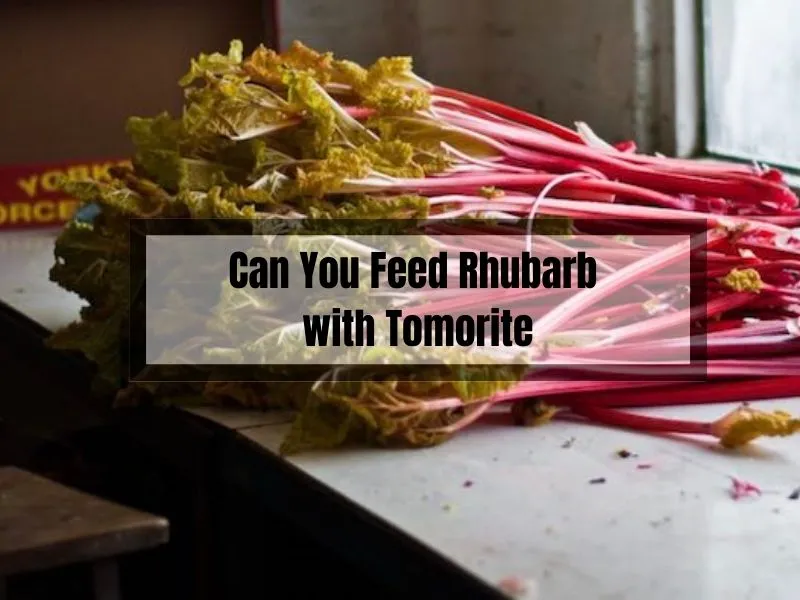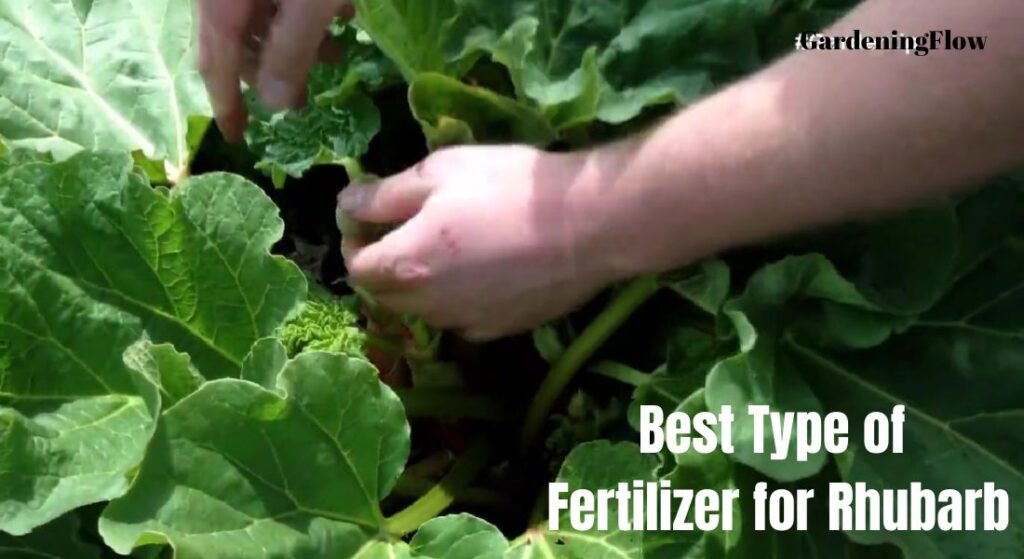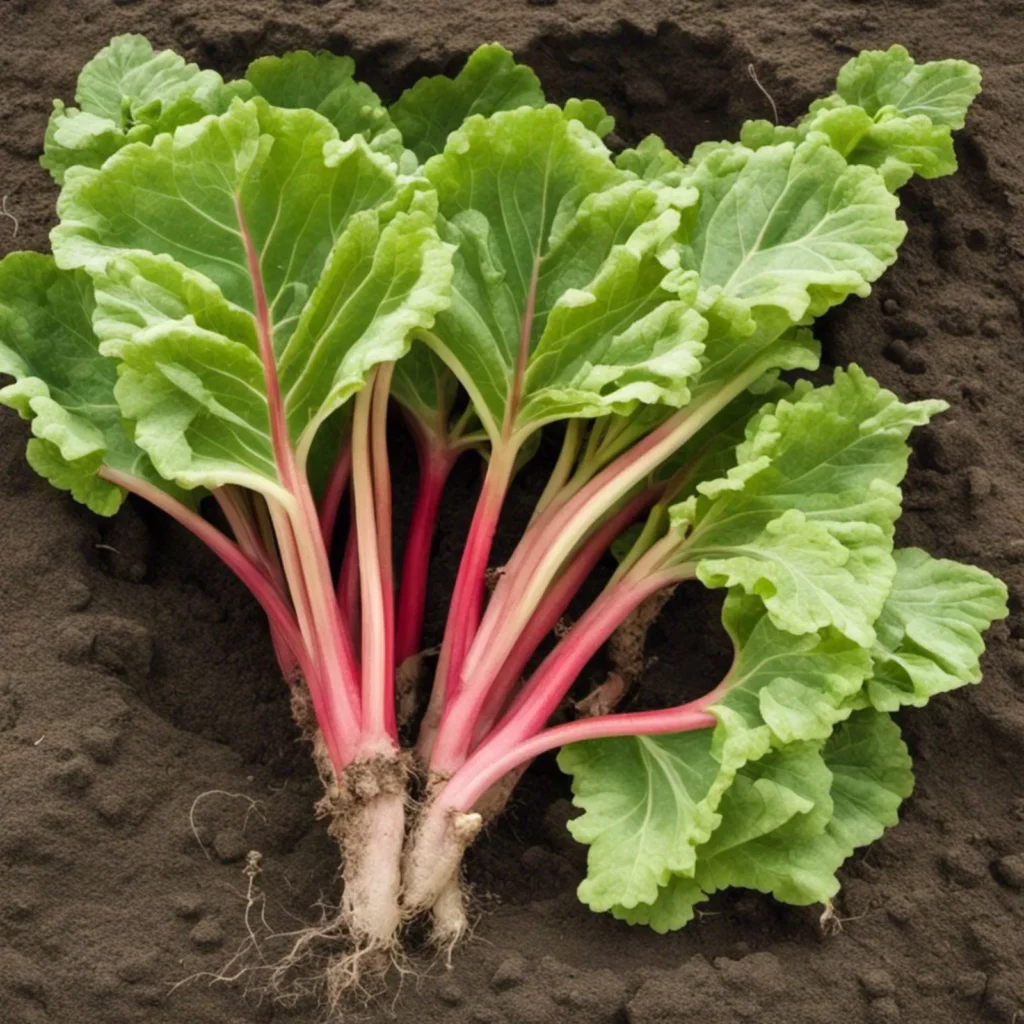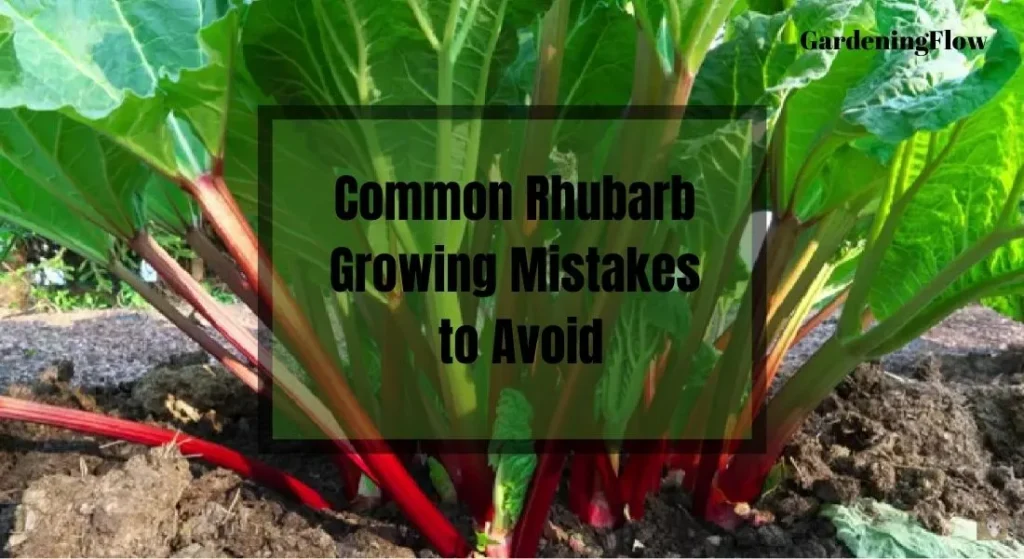Can You Feed Rhubarb with Tomorite? Your Ultimate 5-Step Guide to Robust Plants
Rhubarb is a nutritious and easy-to-grow vegetable known for its edible stalks, often used in tarts, jams, and pies. Ensuring your rhubarb plants receive the right nutrients, including nitrogen, phosphorus, and potassium, is crucial for their health and productivity.
If you’re wondering whether you can use Tomorite to feed your rhubarb, the answer is yes. Tomorite, a popular fertilizer, can indeed be beneficial for your rhubarb plants.
In this article, we’ll delve into the specifics of using Tomorite for rhubarb and compare it to other suitable options to help you make an informed choice for your garden.
Key Takeaways
- Rhubarb is a nutritious vegetable that requires the right nutrients for healthy growth.
- Tomorite can be used to feed rhubarb, but there are other fertilizers that provide a more suitable nutrient profile.
- It is important to understand the effects of Tomorite on rhubarb before using it as a fertilizer.

Can you Feed Rhubarb with Tomorite?
Yes, you can. If you’re considering using Tomorite as a fertilizer for your rhubarb, there are some important points to keep in mind. Tomorite, a popular tomato fertilizer, contains high levels of potassium, which can be beneficial for rhubarb growth. However, rhubarb has specific nutrient requirements, and it’s crucial to understand how Tomorite may affect it.
Rhubarb is a heavy feeder and needs the right nutrients to thrive, including a balanced ratio of nitrogen, phosphorus, and potassium. A fertilizer designed for fruit and vegetables with a 10-10-10 ratio is a good starting point, and you should apply it twice a year.
While Tomorite can be used on rhubarb, other fertilizers with a 5-10-10 ratio may be more suitable, as rhubarb typically requires more phosphorus than potassium. Tomorite has a higher potassium content than phosphorus.
When using Tomorite on rhubarb, always dilute it according to the package instructions. Applying undiluted Tomorite can harm the plant’s roots. Also, be cautious not to let Tomorite come into contact with the leaves or stalks, as it can cause damage and discoloration.
The Best Type of Fertilizer for Rhubarb
Now that we know Tomorite isn’t the ideal choice for rhubarb, let’s talk about the best type of fertilizer for our beloved plants.
Rhubarb plants need a balanced fertilizer that’s rich in nitrogen and phosphorus, as well as potassium. A 10-10-10 or 12-12-12 granular fertilizer should do the trick.
When compared to Tomorite, these fertilizers provide a more suitable nutrient profile for rhubarb plants. So, if you want your rhubarb to thrive, it’s better to use a fertilizer specifically designed for it.
Here is The step by step Guide about Fertilizer for Rhubarb
How to Feed Rhubarb with Tomorite: 5-Step Guide to Feeding with Tomorite

So, you want to know how to feed your beloved rhubarb plants with Tomorite? Well, you’ve come to the right place! As a seasoned gardener, I have some tips and tricks up my sleeve that will help you grow healthy and thriving rhubarb plants.
First things first, let’s talk about what Tomorite is. Tomorite is a liquid fertilizer that is high in potassium and other essential nutrients that plants need to grow strong and healthy. It is perfect for rhubarb plants as they require a lot of potassium to produce those delicious stalks that we love to eat.
Now, let’s get into how to feed your rhubarb with Tomorite.
Step 1: Choose the right time
The best time to feed your rhubarb with Tomorite is in the spring when the plants are just starting to grow.
This is when they need the most nutrients to support their growth. You can also give them a second feeding in the summer if you want to encourage more growth.
Step 2: Dilute the Tomorite
Tomorite is a concentrated fertilizer, so you need to dilute it before using it on your plants. The recommended dilution is one capful of Tomorite to every 4.5 liters of water. Make sure to mix it well before using it.
Step 3: Apply the Tomorite
Now it’s time to apply the Tomorite to your rhubarb plants. Pour the diluted fertilizer around the base of the plants, making sure to avoid getting any on the leaves. You can use a watering can or a hose with a spray nozzle to apply the Tomorite.
Step 4: Water the Plants
After applying the Tomorite, make sure to water your rhubarb plants well. This will help the fertilizer to soak into the soil and reach the roots of the plants.
Step 5: Repeat
Repeat this process every 4-6 weeks during the growing season to keep your rhubarb plants healthy and strong.
Dos and Don’ts
When feeding rhubarb with Tomorite, there are a few dos and don’ts to keep in mind:
Dos:
- Do follow the instructions on the package carefully when mixing and applying Tomorite.
- Do use Tomorite sparingly. Over-fertilizing can cause the rhubarb to produce too much foliage and not enough stalks.
- Do water the plant thoroughly after applying Tomorite to help the fertilizer soak into the soil.
Don’ts:
- Don’t apply Tomorite when the soil is dry. The fertilizer can burn the roots of the plant.
- Don’t get Tomorite on the leaves of the plant. This can cause leaf burn.
- Don’t over-fertilize the plant. Too much fertilizer can cause the rhubarb to produce too much foliage and not enough stalks.
By following these simple steps and guidelines, you can ensure that your rhubarb plants are getting the nutrients they need to grow healthy and strong.
Benefits of Tomorite for Plants
If you’re looking for a fertilizer that can help your plants grow healthy and strong, Tomorite might be just what you need. Here are some benefits of using Tomorite for your plants:
1. Provides essential nutrients
Tomorite is a high-quality fertilizer that contains a balanced mix of essential nutrients, including nitrogen, phosphorus, and potassium.
These nutrients are essential for plant growth and development, and they help to promote healthy roots, stems, leaves, and flowers.
2. Improves soil quality
Tomorite contains organic matter that can help to improve soil quality by increasing its water-holding capacity, improving its structure, and promoting the growth of beneficial microorganisms. This can help to create a healthy environment for your plants to grow in.
3. Promotes strong root development
Tomorite contains a high level of phosphorus, which is essential for root development. By using Tomorite, you can promote strong root growth, which can help your plants to absorb nutrients more efficiently and grow healthier and stronger.
4. Easy to use
Tomorite is easy to use and can be applied directly to the soil around your plants. Simply follow the instructions on the packaging to determine how much fertilizer to use and how often to apply it.
5. Suitable for a wide range of plants
Tomorite is a versatile fertilizer that can be used on a wide range of plants, including vegetables, fruits, flowers, and shrubs. Whether you’re growing tomatoes, rhubarb, or roses, Tomorite can help to promote healthy growth and development.
Overall, using Tomorite as a fertilizer can provide numerous benefits for your plants. By providing essential nutrients, improving soil quality, promoting strong root development, and being easy to use, Tomorite can help your plants to grow healthy and strong.
Effects of Tomorite on Rhubarb

If you’re considering using Tomorite to feed your rhubarb plants, it’s important to understand the effects it may have on your plants.
While Tomorite is a popular tomato fertilizer that contains high levels of potassium and other essential nutrients, it may not be the best choice for rhubarb.
Here are some effects that Tomorite may have on your rhubarb plants:
- Increased potassium levels: Tomorite is high in potassium, which can be beneficial for some plants. However, too much potassium can be harmful to rhubarb plants, causing them to become more susceptible to diseases and pests. It’s important to monitor the potassium levels in your soil and adjust your fertilizer accordingly.
- Imbalanced nutrient profile: While Tomorite contains a range of essential nutrients, the nutrient profile may not be ideal for rhubarb plants. Rhubarb requires a balance of nitrogen, phosphorus, and potassium, as well as other micronutrients. Using a fertilizer that is specifically formulated for rhubarb can help ensure that your plants receive the nutrients they need.
- Over-fertilization: Over-fertilization can be harmful to rhubarb plants, causing them to produce weak, spindly growth and reducing the quality of the stalks. It’s important to follow the recommended application rates for your fertilizer and avoid applying too much.
If you do decide to use Tomorite to feed your rhubarb plants, it’s important to monitor your plants carefully and adjust your fertilizer as needed.
You may want to consider using a fertilizer that is specifically formulated for rhubarb, such as a balanced 10-10-10 fertilizer or a slow-release organic fertilizer.
Common Rhubarb Growing Mistakes to Avoid

Fertilizing properly is just one part of keeping your rhubarb plants happy and healthy. Here are some other common mistakes to watch out for:
- Over-watering: Rhubarb plants like moist soil, but over-watering can lead to root rot. Make sure your soil drains well to avoid this issue.
- Planting too close together: Give your rhubarb plants plenty of space to grow by planting them about 3-4 feet apart.
- Harvesting too early: Wait until the second year after planting to harvest rhubarb stalks. This allows the plant to establish itself and produce a better harvest in the long run.
- Harvesting all the stalks at once: Always leave at least a third of the stalks on the plant, as removing all of them can weaken the plant and reduce future yields.
- Ignoring pests and diseases: Keep an eye out for common rhubarb pests like slugs and snails, as well as diseases like crown rot or leaf spot.
Being aware of these mistakes and taking steps to avoid them can help ensure a healthy and bountiful rhubarb harvest.
Discover common mistakes to avoid, such as over-watering, planting too closely, harvesting too early or all at once, and ignoring pests and diseases.
By incorporating this valuable information, you can maximize your rhubarb harvest and cultivate thriving plants.
Signs of Weak or Diseased Rhubarb Plants
No one wants their precious rhubarb plants to struggle, so it’s essential to recognize the signs of weak or diseased plants. Here’s what to look out for:
- Yellowing leaves: This may indicate a lack of nutrients or a pest problem. Check your fertilizing routine and keep an eye out for pests.
- Wilted or drooping stalks: This could be due to over-watering, under-watering, or a disease. Adjust your watering routine and inspect the plant for signs of disease.
- Holes or chewed leaves: This is a clear sign of a pest problem. Slugs, snails, and caterpillars love rhubarb leaves, so take measures to keep them at bay.
- Soft or mushy crowns: This may be a symptom of crown rot, a fungal disease. Remove the affected parts and improve soil drainage to help prevent further issues.
If you notice any of these signs, take action to address the problem and restore your rhubarb plant’s health.
Alternatives to Tomorite for Rhubarb
If you’re looking for alternatives to Tomorite for feeding your rhubarb plants, there are several options to consider.
While Tomorite can be used to feed rhubarb, there are other fertilizers that provide a more suitable nutrient profile. Here are some alternatives to Tomorite for feeding your rhubarb plants:
1. Organic Fertilizers
Organic fertilizers are a great alternative to Tomorite for feeding your rhubarb plants. They are made from natural materials and provide a slow-release source of nutrients that are beneficial for plant growth. Some examples of organic fertilizers that are suitable for rhubarb plants include:
- Compost: This is a great source of organic matter that can be added to the soil to improve its structure and fertility. It also provides a slow-release source of nutrients that are beneficial for plant growth.
- Manure: This is another excellent source of organic matter that can be added to the soil to improve its fertility. It is high in nitrogen, which is important for plant growth.
- Fish emulsion: This is a liquid fertilizer that is made from fish waste. It is rich in nitrogen, phosphorus, and potassium, which are essential for plant growth.
2. Chemical Fertilizers
Chemical fertilizers are another option for feeding your rhubarb plants. They provide a quick-release source of nutrients that are beneficial for plant growth.
However, they can be harmful to the environment if used improperly. Some examples of chemical fertilizers that are suitable for rhubarb plants include:
- 10-10-10 fertilizer: This is a balanced fertilizer that contains equal amounts of nitrogen, phosphorus, and potassium. It provides a quick-release source of nutrients that are beneficial for plant growth.
- Urea: This is a nitrogen-rich fertilizer that provides a quick-release source of nitrogen. It is important to use it in moderation, as excessive use can cause damage to the plant.
3. Mulching
Mulching is another alternative to Tomorite for feeding your rhubarb plants. It involves adding a layer of organic matter to the soil surface around the plant.
This helps to retain moisture in the soil, suppress weeds, and provide a slow-release source of nutrients. Some examples of materials that can be used for mulching include:
- Grass clippings
- Leaves
- Straw
FAQs
How often should I fertilize my rhubarb plant?
Fertilize your rhubarb plant twice a year – once in early spring and again in late summer or early fall.
Can I use homemade compost to fertilize my rhubarb?
Yes, homemade compost can be an excellent source of nutrients for your rhubarb plant. Just make sure it’s well-rotted and rich in organic matter.
What other plants can benefit from Tomorite?
Besides tomatoes, Tomorite can also be used for other fruiting plants like peppers, eggplants, and cucumbers.
How do I know if my rhubarb plant needs more or less fertilizer?
Signs that your rhubarb may need more fertilizer include yellowing leaves and slow growth. If the leaves are dark green and the plant appears healthy, it’s likely receiving enough nutrients.
When is the best time to harvest rhubarb?
The best time to harvest rhubarb is in late spring to early summer, when the stalks are firm and crisp. Avoid harvesting during the plant’s first year, as this allows it to establish itself and produce better yields in the future.
Conclusion
So, there you have it! While you can feed rhubarb with Tomorite, it’s not the ideal choice for optimal growth and yield. By using a balanced fertilizer designed for rhubarb and following proper fertilization and care techniques, you can enjoy a healthy and bountiful rhubarb harvest.
Don’t forget to share your own experiences and tips for growing rhubarb in the comments section – we’re all in this together! Happy gardening!
Related Posts:




